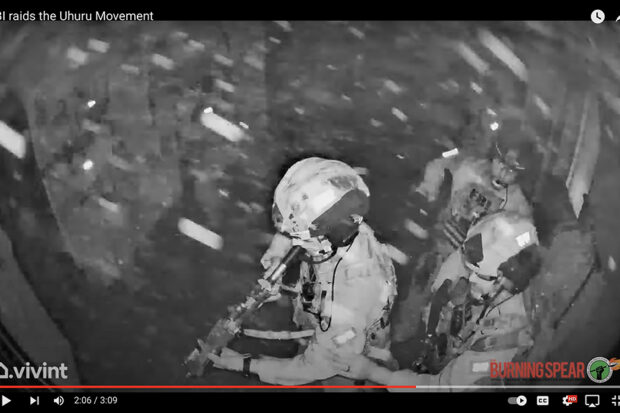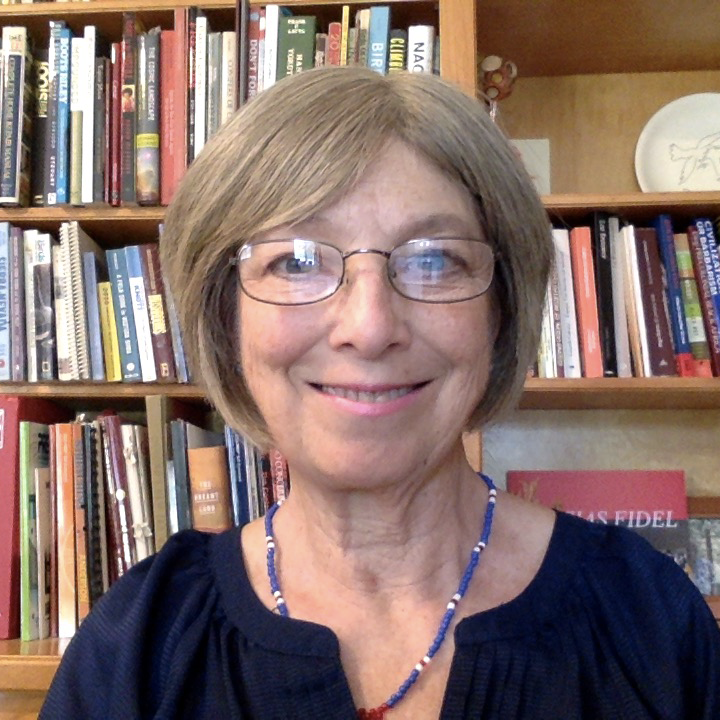
We are again in a period of racist ultranationalism and right-wing extremism. It’s not the first one. We can choose to defend those who are under attack now. Or we can wait until the attackers come for us.
History Repeats Itself
Red Summer, Lynching, Palmer Raids and Red Squads
During the period after the First World War, there was an increase of white supremacy, ultranationalism, extreme hostility to socialism and communism, and efforts to identify those engaged in peace efforts with enemy sympathizers. It is not incidental that lynching spread widely during this period. White supremacy is the oldest and most pervasive of the right-wing terrorist ideologies.
The Red Summer was a period in 1919 during which white supremacist terrorism occurred in more than three dozen cities across the United States. The term Red Summer was coined by NAACP field secretary and author James Weldon Johnson.
African Americans came under attack in at least 38 separate incidents, and unknown hundreds were killed, with massive destruction of homes and businesses. In many of these attacks, Black people fought back, defending themselves and their right to self-defense. In 1919, there were also numerous lynchings. Authorities did not prosecute the lynchings or the attacks.
The New York Times ran an article in 1919 with the headline “Reds Try to Stir Negroes to Revolt” that repeated federal claims that the violence resulted from “an agitation, which involves the I.W.W. [International Workers of the World], Bolshevism and the worst features of other extreme radical movements.”
And “every week the militant leaders gain more headway. They may be divided into general classes. One consists of radicals and revolutionaries. They are spreading Bolshevist propaganda. It is reported that they are winning many recruits among the colored race.
“When the ignorance that exists among negroes in many sections of the country is taken into consideration the danger of inflaming them by revolutionary doctrine may [be] apprehended.”
J. Edgar Hoover was at the beginning of his ugly career, doing analysis for Attorney General A. Mitchell Palmer. In Washington, D.C., in July 1919, a rumor of the arrest of a Black man for the rape of a white woman set off four days of attacks by white men on random Black individuals.
When police refused to intervene, the Black population fought back. The NAACP sent a telegram of protest to President Woodrow Wilson referring to “the shame put upon the country by the mobs, including United States soldiers, sailors and marines, which have assaulted innocent and unoffending negroes in the national capital.
“Men in uniform have attacked negroes on the streets and pulled them from streetcars to beat them. Crowds are reported…to have directed attacks against any passing negro…The National Association for the Advancement of Colored People calls upon you as President and Commander in Chief of the Armed Forces of the nation to make a statement condemning mob violence and to enforce such military law as the situation demands.”
The notoriously racist Wilson didn’t respond. And Hoover’s analysis was to blame “numerous assaults committed by Negroes upon white women.”
On Aug. 1, 1919, Palmer named the 24-year-old Hoover to head a new division of the Justice Department’s Bureau of Investigation, the General Intelligence Division (GID), with responsibility for investigating the programs of radical groups and identifying their members.
Hoover began an investigation of “negro activities” and targeted Marcus Garvey because he thought his newspaper, Negro World, preached Bolshevism. Hoover authorized the hiring of Black undercover agents to spy on Black organizations and publications in Harlem. It was the first version of what was to become COINTELPRO.
The Red Squads of that period specialized in killing and jailing the leaders and members of the IWW and the Communist Party. They were also motivated by a fear of political radicalism, of workers mobilizing for their rights, of such radical innovations as child labor laws and women’s suffrage.
And fear of Black people, of course: Palmer reported to Congress on the threat that anarchists and Bolsheviks posed to the government. More than half the report documented radicalism in the Black community and the “open defiance” Black leaders advocated in response to white violence.
The report criticized Black community leaders for an “ill-governed reaction toward race rioting…In all discussions of the recent racial riots against blacks there is reflected the note of pride that the Negro has found himself. That he has ‘fought back,’ that never again will he tamely submit to violence and intimidation.” It described “the dangerous spirit of defiance and vengeance at work among the Negro leaders.”
Palmer also created the first form of what became the FBI. The Palmer Raids were a series of raids conducted in November 1919 and January 1920 by the U.S. Department of Justice under the Wilson administration to capture and arrest suspected socialists, especially anarchists and communists, and deport them.
Arrests and seizures of property without warrants occurred on a massive scale in more than 30 cities. Beatings and brutality were commonplace. More than 16,000 “suspected communists and anarchists” were arrested and held without trial under cruel conditions.
McCarthy and HUAC; Hoover and COINTELPRO
The “second Red Scare” was, of course, the McCarthy era, and some of us are old enough to remember the effects. Although Joseph McCarthy’s name is firmly attached to the period as the head of the House Un-American Activities Committee that questioned and imprisoned people, it might just as well be termed the Hoover era, after J. Edgar Hoover, who actually designed the loyalty and security programs, as well as the surveillance and persecutions.
The Counterintelligence Program (COINTELPRO), organized by the FBI, was officially initiated in 1956, though obviously Hoover actually began his undercover infiltration and war on Black people in the United States as far back as 1919. COINTELPRO was created to disrupt and discredit U.S. political and racial/social justice organizations through surveillance, infiltration, entrapment and false information, and to organize the assassination of effective leaders.
COINTELPRO’s mission included the following:
- Create a negative public image for target groups (e.g., through surveilling activists and then releasing negative personal information to the public)
- Break down internal organization by creating conflicts (e.g., by having agents exacerbate racial tensions or sending anonymous letters to try to create conflicts)
- Create dissension between groups (e.g., by spreading rumors that other groups were stealing money)
- Restrict access to public resources (e.g., by pressuring nonprofit organizations to cut off funding or material support)
- Restrict the ability to organize protests (e.g., through agents promoting violence against police during planning and at protests)
- Restrict the ability of individuals to participate in group activities (e.g., by character assassinations, false arrests, surveillance, approaches to employers, letters sent to spouses and IRS audits)
This program has been called “the FBI’s war on Black America,” which is true, but incomplete. In addition to Black organizations, many other groups were targeted: the Communist Party, feminist organizations, antiwar groups, the American Indian Movement (AIM) and other Native American groups, environmental organizations, Puerto Rican independence groups, organized labor and the left in general.
Violent FBI Raids Against Black Organizations Now
Here we are again.
On July 29, 2022, the FBI raided the St. Louis, Mo., home of Omali Yeshitela, the leader of the African People’s Socialist Party (APSP), and offices of the Uhuru Movement. The APSP and the Uhuru Movement are U.S. Black nationalist organizations with a history going back to the early 1970s of opposing U.S. imperialism and the oppression of Black people.
The raid took place at 5 a.m., using flash-bang grenades, while large numbers of heavily armed agents in combat gear broke down the doors and broke windows. The only occupants of the home were Yeshitela, age 81, and his wife, Ona Zené Yeshitela.
At the same time, the FBI staged raids on different offices of the Uhuru Movement in St. Louis and St. Petersburg, Fla., including the office of the APSP’s radio station and newspaper, Burning Spear.
In April 2023, the Biden administration charged Yeshitela and Penny Hess, Jesse Nevel and Augustus Romain Jr., all U.S. citizens from this pan-Africanist group, with conspiring with the Russian government to sow discord in U.S. elections.
“The indictment happened after something like nine months,” says Yeshitela, “after we were characterized as unindicted co-conspirators in some plot with the Russians, who it is said that we served in fighting for—around the questions of reparations and fighting to bring the United States before the United Nations for the crime of genocide against African people, and for our differences with the United States in terms of the Ukraine war, and our participation in elections.”
New York Times Complicit in Attacks—Again
Code Pink and other organizations, including the Tricontinental Institute for Social Research, the People’s Forum, and Just World News and Books, came under attack recently.
The New York Times ran an article attacking groups funded by Neville Roy Singham, including the words “none of Mr. Singham’s nonprofits have registered under the Foreign Agents Registration Act, as is required of groups that seek to influence public opinion on behalf of foreign powers.” Then Sen. Marco Rubio (R–Fla.) called for a federal investigation of these groups on the basis that they are somehow agents of the Chinese government.
Weaponizing the Foreign Agents Registration Act
The Foreign Agents Registration Act was used in the McCarthy era, most infamously to target W.E.B. Du Bois and the Peace Information Center (PIC), a U.S. anti-nuclear group, which was connected with international peace movements and published anti-nuclear and pacifist literature from around the world, including the international Stockholm anti-nuclear petition.
The Justice Department deemed this a communist threat to national security and a “propaganda trick” and indicted Du Bois and four other PIC officers for failing to register as foreign agents. Although the case was ultimately dismissed by a judge for lack of evidence, the costs involved with legal defense effectively shut down the Peace Information Center.
The prosecution of Du Bois and his co-defendants not only succeeded in closing the Center but also sent a message to other organizations that the government would prosecute those who were successful at organizing against nuclear weapons and militarism.
More recently, in 2018, the Foreign Agents Registration Act was used against environmental organizations. Four organizations were targeted for Congressional investigation: the National Resources Defense Council (NRDC), the Center for Biological Diversity (CBD), the World Research Institute and Earthjustice. The accusation against the NRDC alleged that the NRDC was more critical of U.S. environment policy than that of China. The accusation against the CBD was that it had opposed the relocation of a U.S. Marine base in Okinawa on environmental grounds! Again, these organizations had to expend resources defending themselves from charges of being “foreign agents.”
The use of the Foreign Agents Registration Act for political purposes has a history. Congressional committees and individual members of Congress, as well as the Justice Department, have used this act to target organizations with which they disagree. Even without any proof of wrongdoing, much less a conviction, this can drain the human and financial resources of an organization and destroy its functioning.
In light of this history, it is hopelessly naive, or else intentionally misleading, to pretend that an attack that suggests that organizations should register as foreign agents is “simply revealing the sources of their funding.” Singham is a U.S. citizen. They are not “Mr. Singham’s nonprofits” but rather organizations to which he has made substantial contributions.
Pastor Martin Niemöller’s “First they came…” is so well known that there is no need to quote the whole comment here. But here are the last three lines in case you have forgotten: “Then they came for me / and there was no one left / to speak out for me.”

